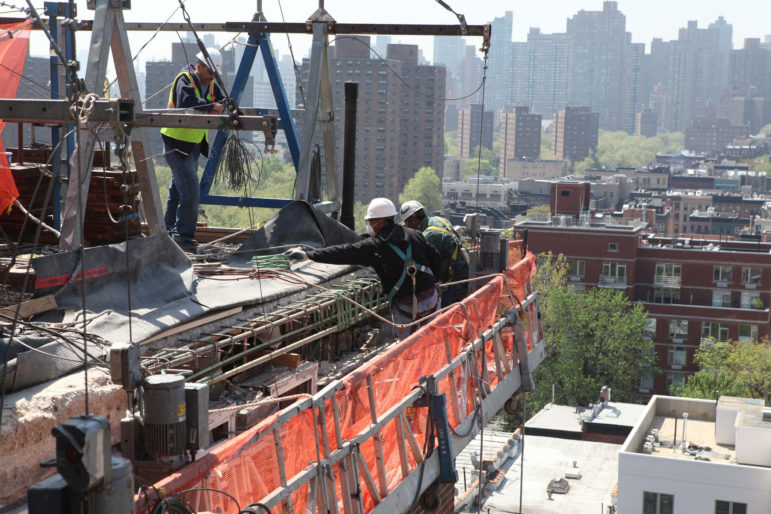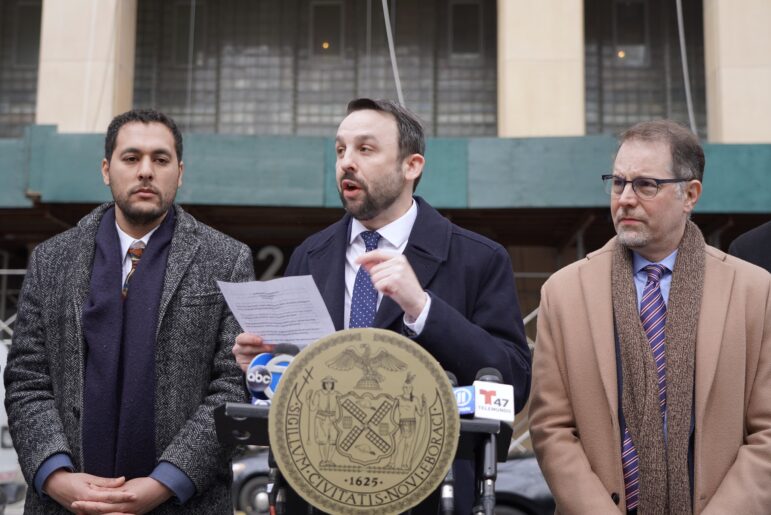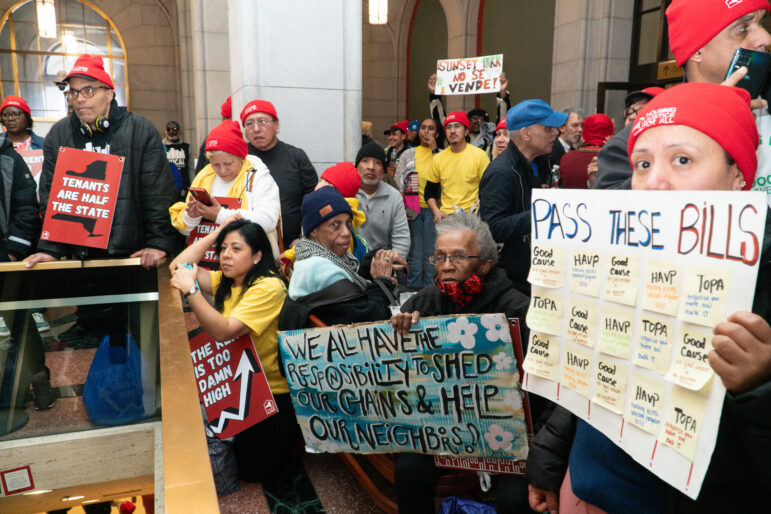
NYCHA
A capital project at NYCHA's Johnson Houses in 2012.
CityViews: Fixing NYCHA Means Scrapping Project-Labor Agreements
Read it here.
New Yorkers have recently been getting a lot of one-sided and inaccurate information about project labor agreements, or PLAs. If we are going to address the challenges facing public building projects, let’s at least start with some facts.
PLAs are negotiated by management— that’s right, management—in the form of project owners or their representatives, and unions representing trades employed on these projects. To hear some critics, one would think management is absent from the process. In fact, it is often the case that management approaches labor to request the use of a PLA, many times as a repeat customer. This can occur only if project owners believe PLAs work, which they do when they are effectively administered.
To cite perhaps the best example at the national level, Toyota, a $190 billion company that is consistently among the leading automobile makers in the world, has for years used PLAs to build and retool its manufacturing facilities in the U.S. Successful businesses like this choose to use PLAs over and over again because they deliver proven results.
When government is the project owner, the record of PLAs in New York City is similarly strong. Opponents of PLAs conveniently fail to mention that most of the PLAs currently in use for city government buildings and school renovations were first negotiated by the administration of Mayor Michael Bloomberg, no slouch when it comes to running a multi-billion-dollar global business or city government.
One would think he and his team knew what they were doing, and they did. The PLAs that began during the Bloomberg administration and have continued into the administration of Mayor Bill de Blasio are currently saving taxpayers $347 million after previously having saved more than $520 million.
Let’s also remember when school construction in the city was such a mess there was consideration given to abolishing the School Construction Authority and handing its responsibilities back to the hapless Board of Education. With the introduction of mayoral control of schools, improvements to the SCA’s management of projects, negotiation of the first major public PLA in the city, and sustained investment in the capital program for schools, there has been a generational transformation of what were once among the worst educational facilities in the country.
Which brings us to NYCHA. Unlike the success story at the SCA, NYCHA remains severely underfunded, a situation that clearly compromises its ability to rehabilitate crumbling apartments. One proposed addition to NYCHA’s toolbox is the utilization of the design-build project delivery method. However, according to an advocate of design-build, the American Council of Engineering Companies of New York, design-build may not be well-suited to projects “where the work will require direct coordination with an ongoing function and/or day-to-day activities,” which describes nearly all NYCHA projects where work must be done in buildings occupied by tenants.
Design-build is being offered as a silver bullet on a number of public construction concerns when even its advocates understand that it does not make sense everywhere. While keeping an open mind on the potential use of design-build in connection with a PLA to improve conditions at NYCHA, let’s also acknowledge that there are massive funding and management issues at NYCHA that will need to be addressed to allow any reforms to succeed.
The multi-dimensional challenges that face public building projects demand multi-dimensional analysis and solutions. PLAs are certainly not the only solution, but they have a demonstrated record of meeting cost, quality, and scheduling challenges on the overwhelming majority of public building projects where they are used.
Paul Fernandes is the executive director of CCA Metro, the Carpenter Contractor Alliance of Metropolitan New York.









4 thoughts on “CityViews: Project Labor Agreements Will Lower Costs and Improve Results for NYCHA”
Hire more painters.
Great Article! This shows how governmental agencies and Unions are working together to save millions of dollars to the tax payer’s of this city.
It’s about time that we realize the great benefits that all parties receive with PLA Agreements. In addition PLA’s provide good middle class jobs and training.
The middle class is the foundation of the American Fabric that is extremely import to everyone !!!
Support PLA project public and private
Vote PLA
PLA’S do work and they save the tax payers money. on some NYCHA properties they use fly by night contractors that do bad work, and NYCHA pays them. after the work fails the Civil service skilled trades have to go back and do the work over. the same job has to be paid for twice out of the tax payers pocket, this is the way NYCHA does business. like the Governor stated the other day, for every 0ne dollar NYCHA spends they waste three dollars.